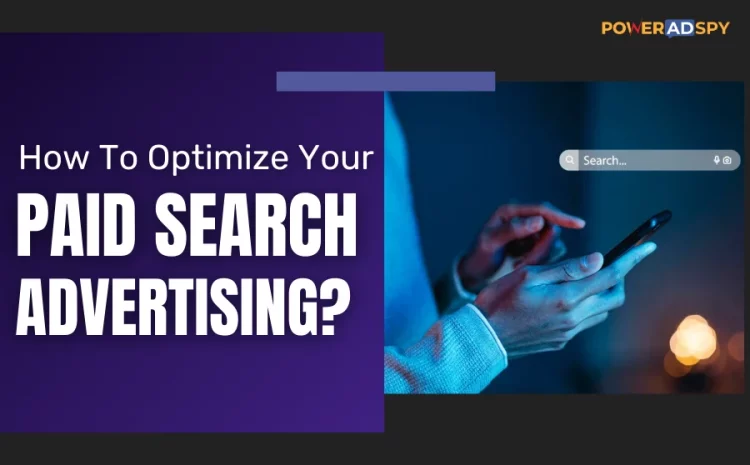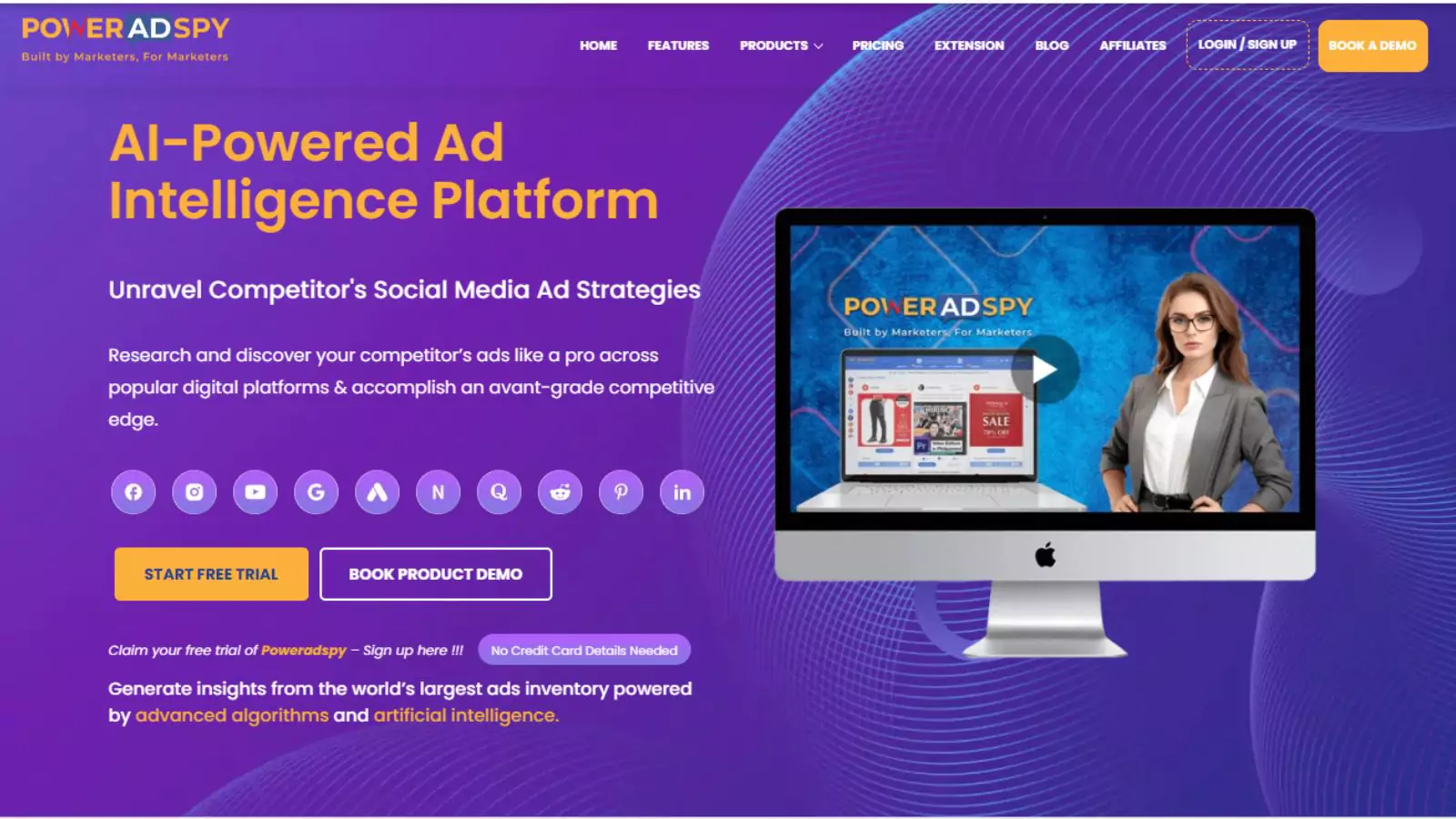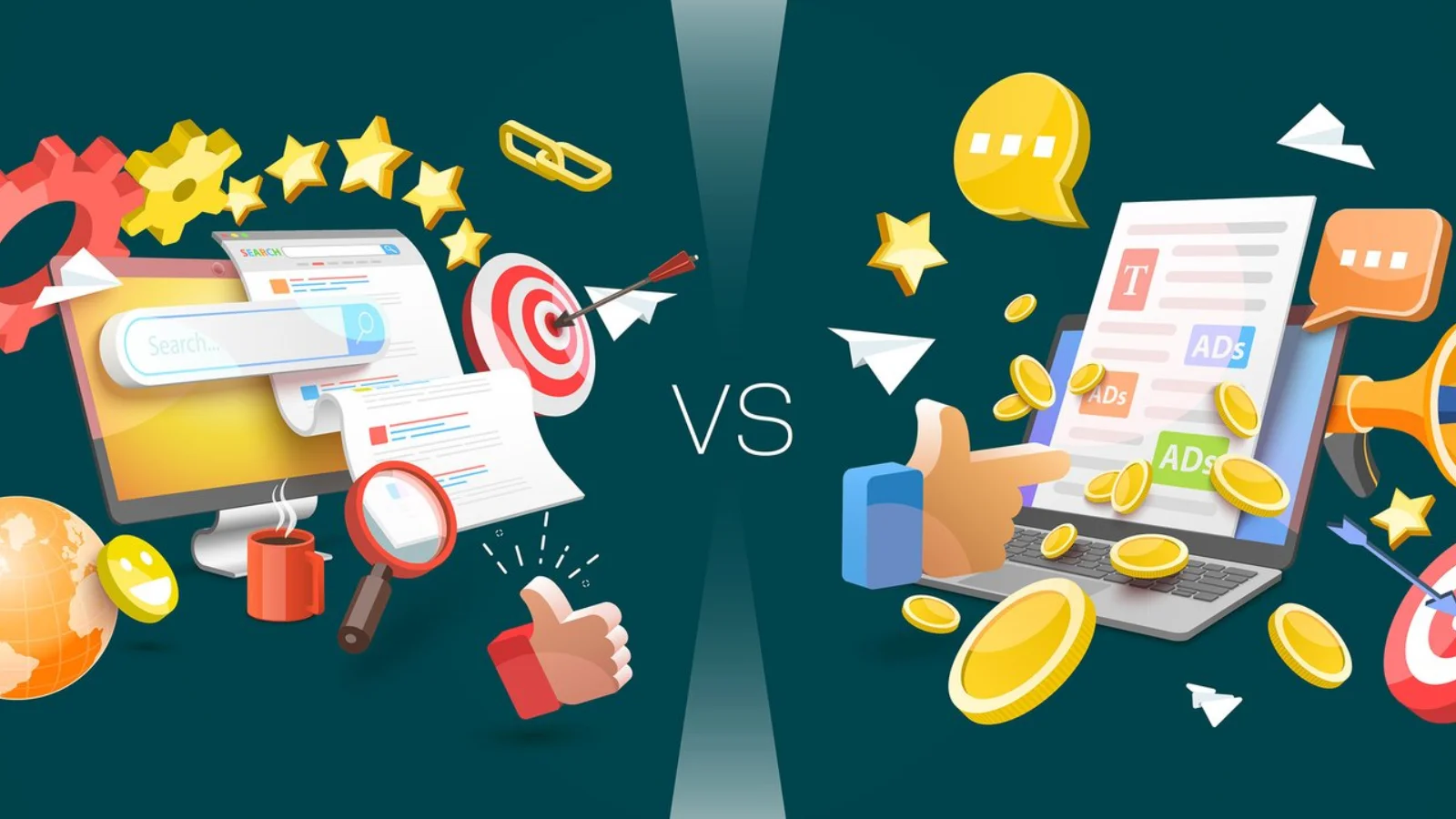How To Optimize Your Paid Search Advertising?
Why is your paid search budget burning fast but bringing low returns?
If that sounds familiar, you’re not alone. Many marketers pour money into paid search campaigns but struggle to see meaningful results. The clicks come in, but conversions stay flat. That’s frustrating—and costly.
Optimizing your paid search isn’t just about tweaking bids. It’s about understanding your audience, targeting smarter, and aligning ads with real user intent.
In this blog, we will walk you through practical ways to improve performance, how does paid search works, and generate better leads from every dollar spent. Whether you manage a few campaigns or run large-scale ads, these tips help you get the most out of your efforts.
Let’s turn those ad dollars into actual results.
Hit ‘Play’ Button & Tune Into The Blog!
What Is Paid Search Marketing?
Have you ever searched for something online and noticed a few ads right at the top? That’s paid search advertising in action. It’s a digital advertising method where marketers pay to show their ads on search engine results pages (SERPs). The goal is simple—drive more traffic to a website by being more visible to people actively looking for your product or service.
The most common online advertising and paid search model is pay-per-click (PPC). With PPC, you only pay when someone clicks on your ad. This makes it a budget-friendly approach, especially for businesses aiming to reach ready-to-convert customers. Paid search ensures you appear exactly when your audience searches for what you offer.
So, how does your ad appear on top of those results pages? Several factors come into play.
Factors Affecting Paid Search
- Bidding: Bidding is one of them. You bid on keywords related to your business. The higher your bid (and ad quality), the better your placement. But it is not all about spending more. Relevance and user experience matter.
- Extensions: You can use extensions to make your ads more useful, like adding phone numbers, links to other pages, or even location info. These details improve user experience and can also influence your position on SERPs.
- Landing Page Quality: Another key element is ad and landing page quality. Search engines evaluate how relevant and helpful your ad and landing page are to the user. It is part of what’s known as a Quality Score. A higher score means a better chance of showing your ad in top positions, sometimes even at a lower cost than competitors.
- Keywords: Next comes keywords. Choosing the right ones is essential. They must match what your potential customers are searching for. The better the keyword targeting, the better your ad performance.
Other things like where the user is, what time it is, what device they’re using, and how many other ads are competing also affect when and where your ad appears. All these details help decide how well your paid search strategy works.
In simple terms, if you’re still asking, “What is paid search advertising?”—here’s a quick paid search definition: It’s a form of online advertising where businesses bid on keywords to display ads at the top of search engine results. You only pay when someone clicks. That’s why it’s also called pay-per-click advertising.
These short and clear advertisements are generally marked as “Ad” or “Sponsored” and are hard to miss. They appear across platforms like Google, Bing, and others, allowing you to reach a vast audience exactly when they are searching for something you offer.
If you are in marketing or advertising, understanding how paid search works—and how to optimize it—can be a game-changer. Done right, it puts your brand in front of the right eyes, at the right time, with the right message.
How To Effectively Set Up & Optimize Your Paid Search Campaigns?
Setting up a unique and strategic paid search campaign is essential to get the most out of your advertising budget. Here’s a breakdown of the key steps to build a successful PPC strategy.
Define Your Location Settings-
Start by choosing where your ads should appear. Set the locations based on where your customers live or where your services are available. You can target by country, city, or even zip code. It ensures your ad shows up only in the regions where it matters.
Choose the Right Keywords-
Leverage keywords that match what your customers search for. Keyword research tools like Google Keyword Planner help you understand search volume, competition, and costs. Picking the right keywords assists in attracting the right audience and using your ad budget wisely.
Keyword planning is one of the most essential steps in paid search advertising. It lets you tap into customer intent and compete where it counts.
Understand Match Types-
Match types determine how closely a user’s query needs to match your chosen keywords. There are three main types:
- Exact Match: Your ad shows only when a user types the accurate phrase. It keeps your audience highly relevant but may reduce reach.
- Broad Match: Your ad may appear even if the search contains similar words or synonyms. It widens your reach but may lower ad quality.
- Phrase Match: This strikes a balance. Your ad appears if the phrase is part of the search, with some flexibility.
Using different match types lets you test what works best for your market. An exact match improves conversion, while a broad match brings traffic. Paid search works best when you find the right balance.
Write Compelling Ad Copy-
Now, create an ad that stands out. Focus on:
- Clear calls-to-action
- Keywords in your text
- Unique value or offers
Avoid all caps, excessive symbols, or trademarked terms. Make sure your ad follows platform guidelines. A clean, relevant ad attracts clicks and helps you win more traffic.
Leveraging an ad spy tool can give you insights into how your competitors write and position their ads. It helps you create better content and avoid costly mistakes.
How PowerAdSpy Helps In Optimizing Paid Search?
PowerAdSpy is a powerful ad intelligence tool that helps marketers, advertisers, and businesses analyze and spy on competitors’ ads across multiple platforms. It gives you insight into the kind of ads performing well, so you can create better campaigns for your brand.
It helps marketers and advertisers fine-tune their search ads for maximum impact by offering deep insights into competitor strategies and ad performance across multiple platforms. Here is how PowerAdSpy optimizes your search–
1. Keyword & Advertiser-Based Ad Search
PowerAdSpy allows you to search ads by keywords, domains, or specific advertisers. This helps you identify high-performing search ad copy and keyword patterns your competitors use, so you can replicate what works and avoid what doesn’t.
2. Detailed Ad Analytics
Optimize your paid search by analyzing real engagement metrics, clicks, likes, comments, shares, and CTA buttons. These insights reveal what messaging and formats resonate with the audience, helping you refine your ad copy and landing page experience.
3. Audience & Placement Filters
Narrow down top-performing ads by:
- Country or Region
- Ad Placement (e.g., search feed, sidebar)
- Audience Age and Gender
This ensures your search ads target the most responsive demographics and appear in high-converting positions.
4. Competitor Tracking for Strategic Edge
PowerAdSpy lets you track your top competitors’ ad movements—see how long their ads run, how often they launch new ones, and which ads get the most traction. This keeps you one step ahead when bidding on high-intent keywords in your paid search campaigns.
5. Organize Winning Ideas
Bookmark the most compelling ads and organize them by campaign or strategy. When you’re planning your next paid search ad, you’ll have a vault of proven, high-performing examples to draw from.
6. Video Ad Insights for YouTube & Beyond
Running search ads on platforms like YouTube? PowerAdSpy’s video analytics help you understand the kind of video content that captures attention, beneficial for optimizing your video search ad creatives.
In short, PowerAdSpy takes the guesswork out of paid search optimization. You get a front-row seat to what works in your industry, so you can build campaigns that convert faster, smarter, and with a strategic edge.
Set Smart Bids-
Bidding is how much you’re willing to pay per click. You can set a different bid for each keyword. The higher the bid, the better your ad placement. But don’t just follow recommendations blindly.
Let’s take an example: if the suggested bid is $5 and you can only pay $3, you can still move forward. Just know your ad might appear lower or less often. Keep testing and adjusting based on performance. It is a core part of optimizing paid search.
Use Ad Extensions-
Extensions to give users more reasons to click. They add extra info like:
- Site links
- Prices
- Contact details
- Business locations
- Phone numbers
These extensions improve user experience and your ad’s quality score. A better score helps your ad rank higher at a lower cost. The more valuable your ad is, the more users trust it.
Launch & Manage Your Ads-
Once everything’s ready, launch your ads. Most platforms start showing ads within hours. You can pause, edit, or update them anytime. This flexibility lets you adjust for new campaigns or offers.
Your billing depends on thresholds or monthly cycles. Usually, you add a card and get charged after spending a set amount or every 30 days.
Paid search lets you reach people actively searching for what you offer when you perform it right. It’s fast, flexible, and focused. Whether optimizing bids or refreshing your ad copy, small changes can lead to major results.
That’s why understanding the paid search definition and how to apply it matters for every advertiser.
Read More
Paid Vs Organic Search: The Real Comparison Of Right Now
How Is Paid Search Advertising Different From Organic SEO?
Paid search and organic SEO help businesses appear in search results. They work in diverse ways. Understanding how paid vs organic search differ helps you choose the right strategy for your goals.
Organic SEO means improving your website’s content and structure to rank higher on search engines without paying for placement. You do this by researching keywords, writing quality content, and making your site technically sound. It helps search engines understand and trust your site, eventually ranking it higher.
SEO sounds appealing because once your site ranks, clicks are free. Many users also trust organic results more than ads. But here’s the catch—organic SEO takes time. A new website might take months, sometimes years, to appear on the first page. Even then, keeping your ranking needs constant effort.
In comparison, paid search gives you quick visibility. Instead of waiting months, your ad can appear at the top of the search results within hours. You pay each time someone clicks, but you reach your audience faster.
From a marketing point of view, SEO is a long-term investment, while paid search is a quick way to attract attention. Businesses often combine both for the best results—organic for long-term presence and paid for instant traffic.
Running SEO campaigns also costs money. You might not pay for clicks, but you spend on tools, content creation, technical help, and regular updates. That’s why comparing the return on investment (ROI) is essential for both strategies.
One tool that helps marketers track and compare search performance is PowerAdSpy, an ad intelligence software. It shows how your competitors run paid ads and what’s working for them. You can fine-tune your paid search campaigns to achieve faster results.Google Ads is a typical example of a paid advertising platform. It offers different types of bidding, like cost per click (CPC) or cost per thousand impressions (CPM). You can set your bid manually or let Google automate it within your budget.
Google’s advertising system has two networks:
Search Network: This includes search results on Google, Maps, Shopping, and search partners.
Display Network: This includes banner ads on websites that partner with Google, and on YouTube and Gmail.
You decide how much to spend, where to appear, and how often your ad appears with paid search. This flexibility helps you target your ideal audience.
So, when choosing between organic SEO and paid search, think about your timeline, budget, and business goals. If you need fast results, paid advertising is an apt choice. If you aim for long-term visibility, SEO is worth the wait. But when used together, they create a powerful marketing engine that drives traffic and builds trust.
Before You Leave
Paid search offers a fast and measurable way to drive targeted traffic to your website. Unlike organic SEO, which takes time to build momentum, paid ads put your brand directly in front of potential customers the moment they search.
It’s ideal for businesses looking for immediate visibility, seasonal promotions, or quick conversions. With tools like ad intelligence software, you can gain insights into what strategies work best and refine your campaigns accordingly.
Understanding how to balance both paid and organic efforts can help maximize your reach and ROI. By studying paid search examples, you get a clear idea of how successful campaigns are structured, making it easier to craft ads that capture attention and convert.
Frequently Asked Questions
Q: Is paid search the same as SEO?
Not quite. Paid search campaigns only run while you continue to invest in them. They deliver quick results—sometimes within a few hours. On the other hand, SEO takes time to build momentum and might take months or even years to show results. However, once a paid search campaign stops receiving funding, the ads stop showing. To gain visibility again, you’ll need to restart the campaign.
Q: Which is better, SEO or PPC?
PPC ads are a great short-term solution if you aim for quick website traffic. But if you’re focused on building a strong and lasting online presence, SEO is the way to go. For the best results, consider using both together. Combining SEO and PPC gives you a balanced approach supporting immediate visibility and long-term growth.
Q: Is SEO free or paid?
Many people think SEO brings in “free website traffic” because they don’t pay for clicks on organic search results. But that idea can be misleading. You don’t pay per click, but you do invest time, effort, and money into creating content, optimizing your site, and improving visibility. So, while it doesn’t involve direct charges like ads, SEO is not free—you still spend resources to make it work.










